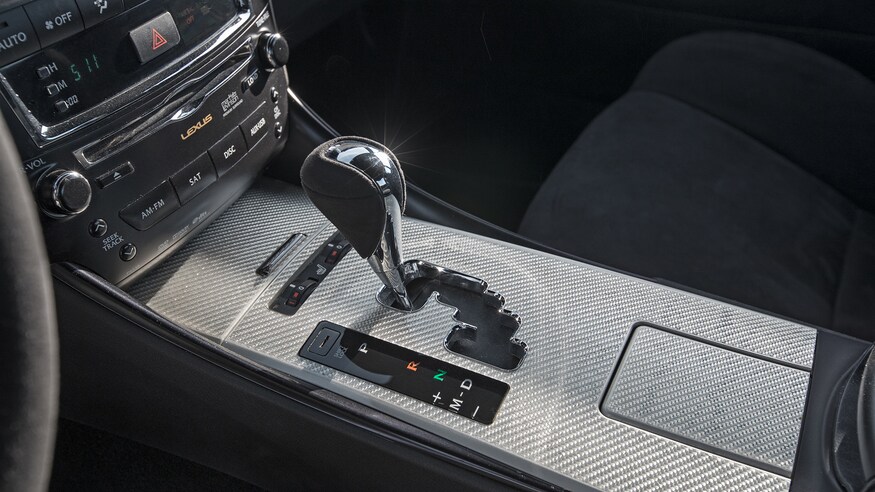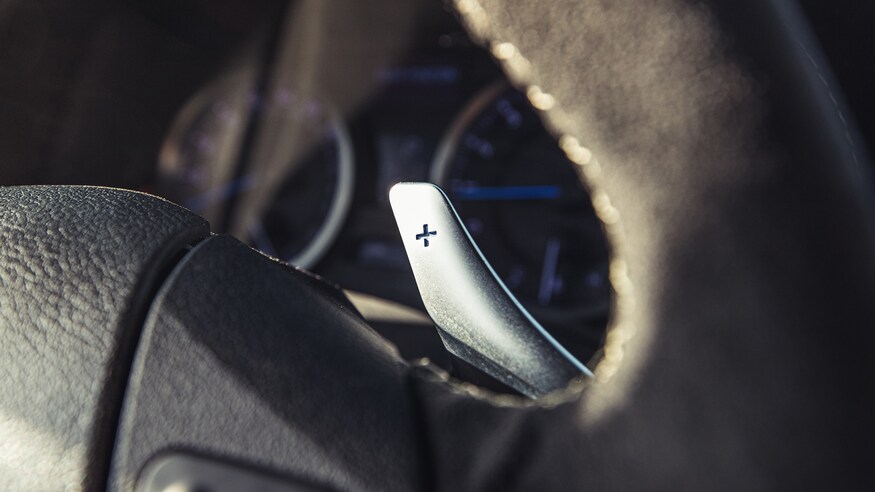IRS+leap-frogging air suspension option
General Motors owns the large SUV space with Chevrolet Tahoe/Suburban, which are by far the market share leaders—and if you add their brand siblings, the company can claim way over half of all sales. But the impressive new Ford Expedition, with its long-wheelbase Max variant and Lincoln Navigator sibling, has started eroding that market dominance over the last year. Their independent rear suspensions have afforded a more comfortable ride and roomier third row and cargo area for some time now, their feature content and fit/finish took a recent quantum-leap forward in the latest redesign, and the twin-turbo V-6 EcoBoost/10-speed automatic powertrains motivating the FoMoCo entries represent stiff competition for the GM brands.
Chevrolet is readying its response, which at long last features an independent rear suspension, revised gas V-8 engines, and a segment-exclusive inline-six diesel all mated to a 10-speed automatic (that shares its essential design with Ford's 10-speed), plus a spanking new electrical architecture that should future-proof the Tahoe, Suburban, and its siblings for all foreseeable technologies likely to appear during its lifetime. I've just had a quick test-ride in a prototype T1 generation Tahoe kitted out with its top-shelf full air suspension, and I can tell you it's poised to defend its high (sales) ground. Here's why:
Different/Better (?) Independent Rear Suspension Design
Ford employs a five-link rear suspension comprised of two trailing links and three lateral links per side. Chevy has gone with a four-link design using one very long trailing link and one equally long (approximately 29 inches by my tape measure) lower lateral link that carries the spring/damper mount, plus two upper lateral links. That super robust long trailing link is said to afford better ride isolation, thanks to a huge and squishy bushing where it mounts to the body. (It also packages conveniently out of the way outboard of the frame rails.) The lateral links, by contrast, all employ harder bushings to resist cornering loads and provide sharper handling response.
Air Springs+Magnetic Shocks+IRS=Better Ride
Three suspensions will be offered on the Tahoe and Suburban—a base variable-rate steel spring coil-over-shock setup using passive hydraulic shocks; a mid-level one pairing the same springs with magnetorheological dampers; and a top offering with air springs and the MR dampers. These are fourth-generation MR dampers that feature lower internal friction and a change away from position-sensing to accelerometer sensors at each corner. This plus the vastly quicker processing speed enabled by the robust new electrical architecture greatly increase the performance of these shocks. Meanwhile, the air springs provide load-leveling, can raise 2 inches for off-road ground clearance, lower 2 inches for passenger/cargo loading, or duck down 0.8 inch for improved aerodynamics. They allowed the engineers to spec a lower primary spring rate for improved ride quality, knowing that simply by increasing the air pressure (to level the load) the spring rates increase to handle that load.
Improved Powertrains
While the displacement, power, and torque specs haven't changed for the 5.3- and 6.2-liter V-8 engines, they're significantly revised to include the Dynamic Fuel Management cylinder deactivation (which can selectively turn off between one and seven cylinders during any particular revolution as dictated by power demand). Our ride was in a top-shelf Tahoe with the 6.2, and I can confirm that this burly V-8 makes a much more joyful noise than the somewhat guttural bark of the EcoBoost six when all eight are pulling. GM's tune of this co-developed 10-speed automatic seems every bit as savvy as Ford's—at least from the passenger seat.
How It Rides
Chevy shuttled us around a familiar ride road that's frequently used for evaluation drives at its Milford Proving Ground. We started out riding in a brand-new Ford Expedition Limited, and then ran the same loop of mixed road surfaces, rail-crossings, washboard, expansion joints, and the like in a top-trim Tahoe with the air/MR setup. We ran the route twice in the Tahoe—once in the comfort-biased default "normal" mode at the same speed we'd experienced in the Expedition, and again at higher speeds in "sport" mode. On the expansion joints it was difficult to tell much difference between the two. When crossing bumps and dips affecting only the left side of the vehicle, the Expedition tossed my head pretty violently while the Tahoe induced just the merest hint of a bobble in either mode. Chatter bumps in a corner sent the rear of the Expedition skittering outboard slightly while the Tahoe tracked through unfazed in both modes. And on the whoop-de-doos the Expedition often experienced a second or third up-and-down motion after the main event, while the Tahoe settled right down. I sensed remarkably little ride degradation in sport mode. We'll be eager to sample the more mainstream suspensions closer to the Tahoe/Suburban's mid-2020 on-sale date, but the MR shocks should be able to deliver many of the above attributes on their own.
How It Sits
While the Suburban only grows 1.3 inches (ending up 3.8 inches longer than the Expedition Max), the Tahoe is 6.8 inches longer (0.7 inch longer than Expedition). As a result, along with the more compact IRS that lowers the rear load floor by up to 5.3 inches, the Tahoe delivers darned near the same third-row seating comfort as the Suburban—certainly enough for this 5-foot-10-inch adult to ride in total comfort (which was not the case in the old knees-up Tahoe way-back.)
Potential Downsides
Official curb weights have yet to be disclosed, but we're told to expect the new trucks to gain "between 50 and 200 pounds." We'll be eager to see if aero improvements, skip-fire engines, and the 10-speed can claw back the fuel economy penalty that additional weight would otherwise cause. Likewise, towing capacities have yet to be divulged and we'll be interested to see how those air springs affect max towing. And finally, the IRS means there will be no more 2500 or 3500HD variants. No great loss as those have only been available to commercial and government buyers for some time, but those folks will be out of luck in 2021.























































